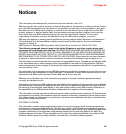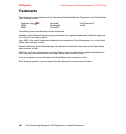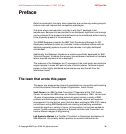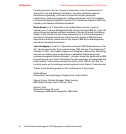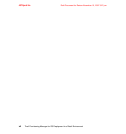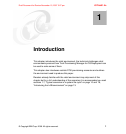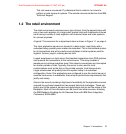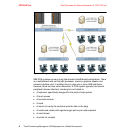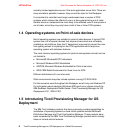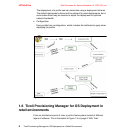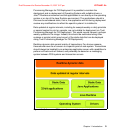Chapter 1. Introduction 3
Draft Document for Review November 15, 2007 3:27 pm 4372ch01.fm
This role covers an external IT professional that is called in to a store to
perform on-site repairs of systems. This include a service technician from IBM
Technical Support.
1.2 The retail environment
The retail environment comprises every type of store, from the apparel store with
one or two cash registers, to a large super market chain with thousands of stores
each having a variety of cash registers, self-checkout lanes and kiosk systems
for various purposes.
A typical IT environment for a department store is shown in Figure 1-1 on page 4.
The main application servers are located in a data center, most likely with a
redundant setup, possibly even made site-redundant. This is the backend system
for all transactions and will normally have interfaces to other systems used for
logistics, finance, payroll, ordering and so forth.
In each warehouse is a local server that handles transactions from POS systems
and forwards the transactions to the central server. This setup enables a
warehouse to continue operation even if the network connections are interrupted
for shorter periods of time. Typically, this server is also used for local
customizations such as the text on the printed receipts, local discounts etc.
Larger warehouses will probaly have this system setup in a redundant
configuration. Even if the applications are configured to use the central server in
case the local server is unavailable, there may be performance requirements that
justify such setup.
Alone in the area of providing a high level of availability for the application servers
required for purchase transactions lies several technical challenges. These are
mainly part of the network, servers and applications and are not the scope of this
Redpaper. Much of this information can be found from other sources, including
the IBM Redbook Enabling the On Demand Store with IBM Store Integration
Framework, SG24-6698.



